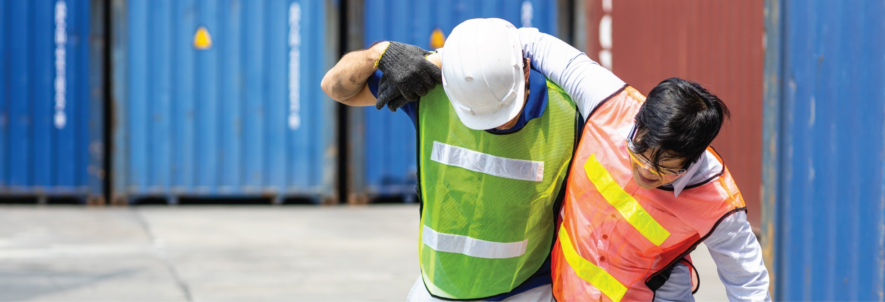
It may come as something of a surprise, but the number one weather-related threat in the U.S. is not hurricanes, tropical storms, floods, or tornadoes. Extreme heat claims the lives of more community members annually than any other naturally occurring condition, and that’s why the National Heat Safety Coalition was recently created.
According to the National Oceanic and Atmospheric Administration (NOAA), heat-driven deaths averaged 138 each year from 1990 to 2019. By comparison, floods caused 88 fatalities, and tornadoes 65, while hurricanes and tropical storms resulted in a combined average of 45 during that period. Although severe weather storms grab headlines and cause high casualties, excessive heat remains a constant force that does not garner enough attention.
What Is the National Heat Safety Coalition?
Heat-stroke survivor and scholar Dr. Douglas Casa recently engaged industry leaders to address heat illness prevention in the workplace. His mission, and that of the Coalition, is to develop and advocate for the use of personal protective equipment and protective clothing in industries and jobs that operate in extreme heat. Through a collaboration with business professionals, scientists, and product developers, the group is inspiring industry leaders to take giant steps forward to decrease the 100 percent preventable heat-related illnesses and workplace fatalities. The National Heat Safety Coalition made its first formal organizational announcement on July 13, 2021.
What is National Heat Safety Coalition Mission?
The Coalition plans to deliver comprehensive information covering research, education, awareness, and workplace solutions regarding heat illness prevention. With a singular purpose of reducing and, potentially, eliminating unnecessary illness and fatalities, the Coalition indicates it will host a series of high-level roundtable discussions with consumer organizations and leading companies. The discussions are designed to share knowledge across sectors to create practical policies and develop equipment that supports hydration and cooling solutions.
Why Heat Illness Prevention is Mission Critical
Although severe weather events pose an existential threat when they strike, extreme heat poses an ongoing health risk to millions of U.S. and international workers on a daily basis. Despite the fact that heat illnesses and deaths are entirely preventable, occupational exposure is prevalent. Thousands of workers suffer unnecessary injuries each year, and outdoor facilities and occupations present heightened dangers. As many as 70 percent of outdoor occupational fatalities happen within only a few days or working outside. This may largely be due to workers not recognizing telltale signs of heat exposure and employers failing to provide protective gear and effective workplace safety policies.
For people who work in the manufacturing sector, heat stress ranks among the most common health challenges. Environments such as foundries and plants that lack large fans to adequately circulate freshly cooled air put employees at increased risk of heat illnesses such as the following, according to the Centers for Disease Control and Prevention.
- Heat Stroke: Considered one of the most dangerous heat-related illnesses, the body loses the ability to control internal temperatures. Fevers can escalate above 106 degrees in under 15 minutes. Without immediate treatment, workers can sustain permanent disabilities or die.
- Heat Exhaustion: Excessive or persistent sweat drains the body of water and salts that help it stay hydrated. People with high blood pressure and older individuals are considered at an increased risk when working in hot workspaces.
- Rhabdomyolysis: This condition is linked to prolonged exertion in hot areas. Heat stress quickly breaks down muscle tissue, and excessive proteins flood the bloodstream. Workers sustain irregular heartbeats, damaged kidneys, and seizures, among other symptoms.
- Heat Syncope: More commonly known as fainting spells, dizziness typically results from prolonged exposure to heat. When workers stand up quickly, they become light-headed and pass out, often due to dehydration.
Among the somewhat milder and less life-threatening health impacts of heat exposure are things such as severe rashes, muscle cramps, and burns. Telltale signs that someone may be at risk of a heat-related condition include heavy sweating, parched lips, dry mouth, difficulty breathing, dizziness, and feelings of weakness. As the Coalition points out, educating employers and frontlines workers can significantly eliminate otherwise preventable illnesses, disabilities, and fatalities.
What Industries Are Most Affected?
For the Coalition to implement heat illness prevention awareness, each industry must take diligent measures to alert and protect at-risk workers. Industry leaders must acknowledge that the following and other work environments pose elevated heat safety risks.
- Metal Foundries
- Ceramic Manufacturing Plants
- Glass Manufacturing Facilities
- Commercial Baking Facilities and Kitchens
- Mining Operations
- Boiler Rooms and Steam Tunnels
- Agricultural Landscapes
- Construction Job Sites
- Oil and Gas Field Work
The list of occupations that require everyday people to complete tasks under heat-hazardous conditions is extensive, to say the least. The failure to adequately address the dangers of exposure prompted thought leaders, such as Dr. Casa, to form the newly-established National Heat Safety Coalition—the first of its kind in the United States. The workplace safety professionals at International Enviroguard support the Coalition’s efforts and will continue to develop the breathable personal protective clothing workers need to remain safe and comfortable.